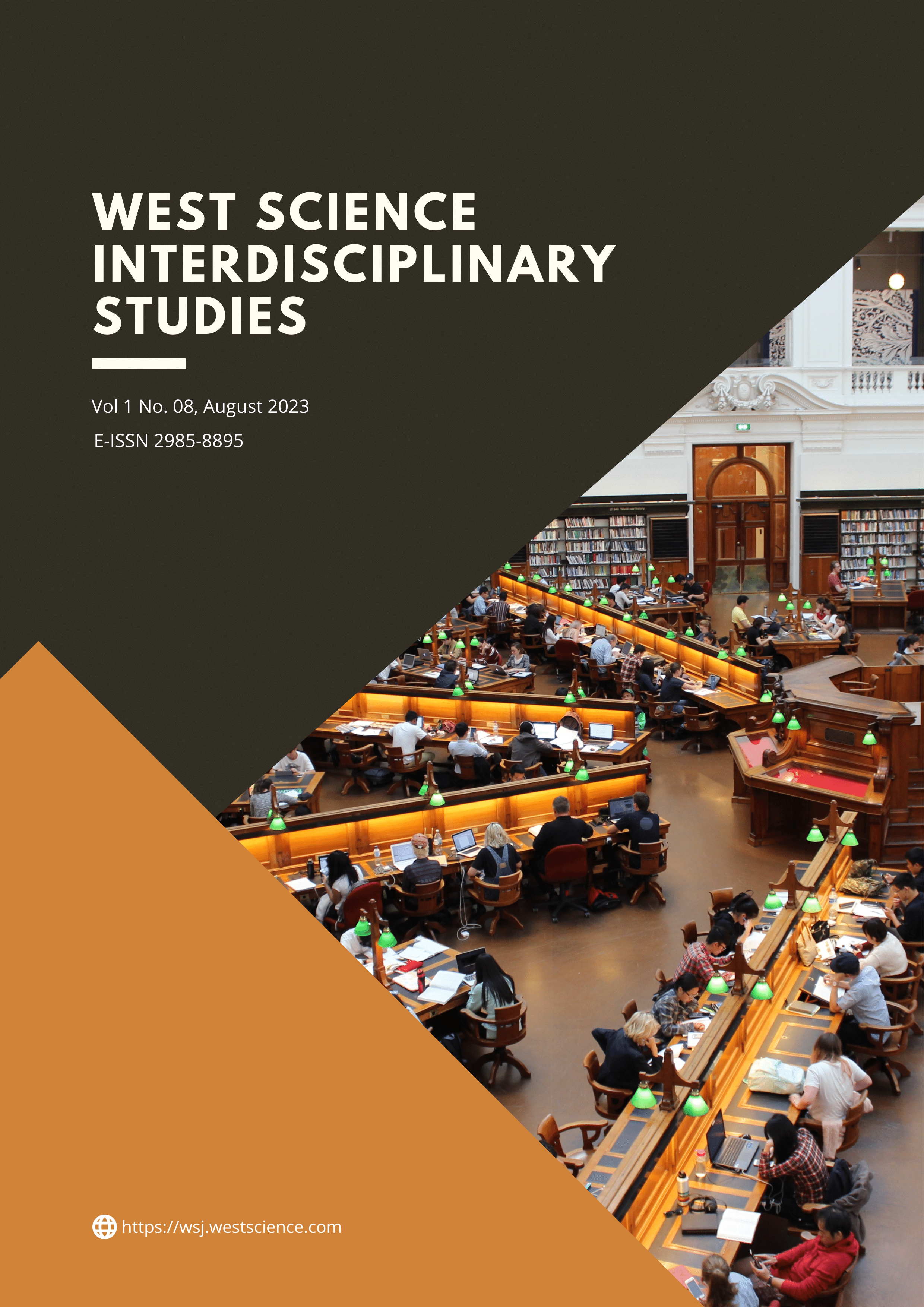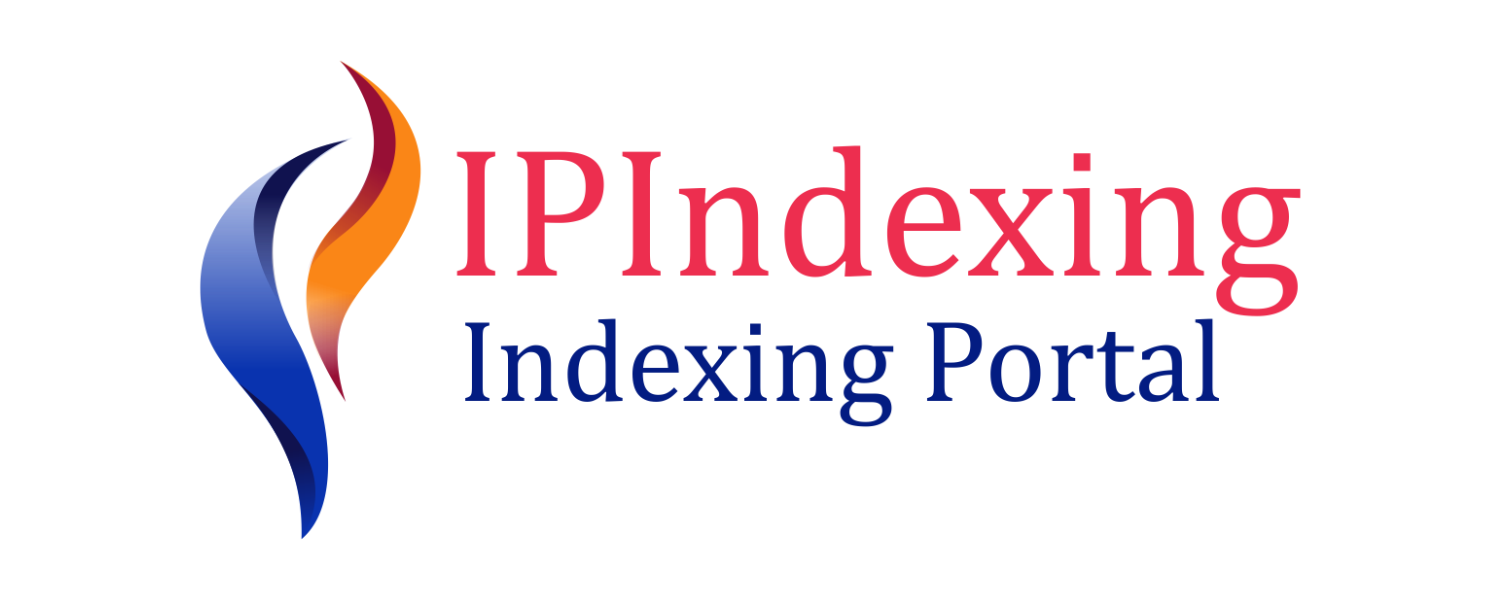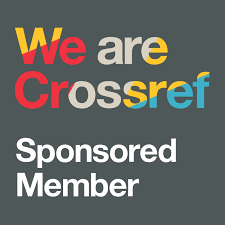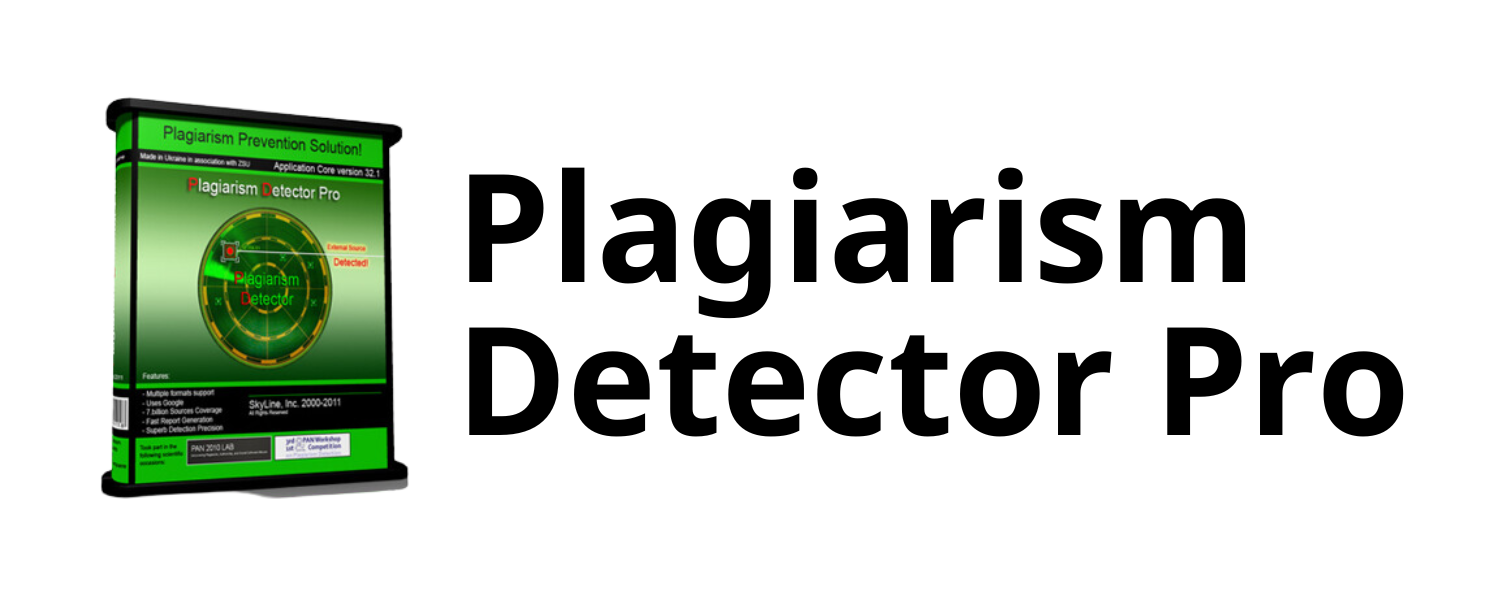The Role of Technology in English Language Learning: A Quantitative Examination of Student Performance Engagement and Motivation
DOI:
https://doi.org/10.58812/wsis.v1i08.468Keywords:
Technology, English Language Learning, Performance, Engagement, Student Motivation, North Sumatra, IndonesiaAbstract
Using a quantitative methodology, this study examined the effects of academic achievement, student motivation, and engagement on the use of technology in English language instruction at a high school in North Sumatra, Indonesia. A sample of 200 students was examined using Structural Equation Modeling with Partial Least Squares (SEM-PLS) in order to investigate the relationship between academic achievement, student engagement, motivation, and technology integration. The findings showed a strong correlation between academic performance, motivation, and engagement with technological integration. A mediation analysis revealed how important student motivation and engagement are in bridging the gap between technology and academic achievement. The results of the bootstrapping study were more reliable, and the proposed model's explanatory strength and predictive significance were highlighted by the R2 and Q2 values. There includes a discussion of the implications for English instruction, along with some helpful suggestions and directions for further investigation.
References
E. M. USLU and T. ÖZGÜN, “The Structure of Primary Literacy Teaching Curriculum and its Relationship with Technology: A Qualitative Research,” Necmettin Erbakan Üniversitesi Ereğli Eğitim Fakültesi Dergisi, vol. 5, no. 1, pp. 46–58, 2023.
A. Alam and A. Mohanty, “Learning on the Move: A Pedagogical Framework for State-of-the-Art Mobile Learning,” in International Conference on Data Management, Analytics & Innovation, Springer, 2023, pp. 735–748.
ت. ر. جمعة, “A Review of Gender Differences in Technology-Based Language Learning,” مجلة ابن خلدون للدراسات والأبحاث, vol. 3, no. 1, 2023.
M. P. C. NIAMA, D. L. D. TIXI, and M. L. L. VÉJAR, “AN INVESTIGATION OF ENGLISH LANGUAGE TEACHING AND LEARNING VIRTUAL RESOURCES-BASED WITH A FOCUS ON HIGHER EDUCATION STUDENTS,” Russian Law Journal, vol. 11, no. 8s, 2023.
S. Susanto, D. S. Nanda, S. Rafik-Galea, and A. Y. Supasa, “From Interference to Fluency: Analyzing Indonesian Students’ Progress in English Oral Communication,” Elsya: Journal of English Language Studies, vol. 5, no. 1, pp. 122–134, 2023.
N. Aisyah and M. H. Hidayatullah, “Implementasi Aplikasi Duolingo dalam Meningkatkan Kosa Kata Bahasa Inggris,” Bidayatuna Jurnal Pendidikan Guru Mandrasah Ibtidaiyah, vol. 6, no. 1, pp. 44–59, 2023.
P. Gayatri, H. Sit, S. Chen, and H. Li, “Sustainable EFL blended education in Indonesia: Practical recommendations,” Sustainability, vol. 15, no. 3, p. 2254, 2023.
K. Putri, “The Impact of English Language Dominance in Music Therapy Learning Resources on Indonesian Music Therapy Students’ Practice,” in Voices: A World Forum for Music Therapy, 2022.
I. Zulfa and M. Suryaman, “An Exploration students’ motivations in improving their English skill: Karawang Junior Islamic Boarding School Case,” Eduvelop: Journal of English Education and Development, vol. 6, no. 1, pp. 13–25, 2022.
J. Jumardi, A. Andi, and H. Naredi, “The Efficiency of Application of Social Media in History Learning at Junior High School,” AL-ISHLAH: Jurnal Pendidikan, vol. 15, no. 2, pp. 2251–2257, 2023.
A. L. Ozila and Z. Zen, “The Web-based LKPD for the Indonesian History Subject for Grade XI Senior High School,” Indonesian Journal Of Educational Research and Review, vol. 6, no. 1, 2023.
S. T. Rahayu, “Analyzing of Using Educational Technology to Improve the Quality and Equity of Learning Outcomes at Politeknik Maritim Negeri,” Jurnal Iqra’: Kajian Ilmu Pendidikan, vol. 8, no. 1, pp. 100–116, 2023.
D. Perwita, R. Widuri, N. C. Afif, and D. A. Thoha, “DIGITALPRENEUR POTENTIAL ANALYSIS OF EDUCATIONAL STUDENTS,” PROMOSI (Jurnal Pendidikan Ekonomi), vol. 11, no. 1, 2023.
I. Magdalena, A. Septiani, and A. R. Rafidah, “Implementasi Desain Pembelajaran Inovatif Ppda Masa Pandemi Covid-19 di SDN Pondok Jengkol,” TSAQOFAH, vol. 3, no. 3, pp. 338–348, 2023.
I. Nurmala, S. Irianto, S. Franchisca, H. Amsa, and R. Susanti, “Technology-Enhanced Language Learning: A Meta-Analysis Study On English Language Teaching Tools,” Journal on Education, vol. 6, no. 1, pp. 2188–2195, 2023.
D. Buragohain, G. Punpeng, S. Jaratjarungkiat, and S. Chaudhary, “Impact of e-learning activities on English as a second language proficiency among engineering cohorts of Malaysian higher education: A 7-month longitudinal study,” in Informatics, MDPI, 2023, p. 31.
R. Rintaningrum, “Technology integration in English language teaching and learning: Benefits and challenges,” Cogent Education, vol. 10, no. 1, p. 2164690, 2023.
T. Vo, D. Truong, and P. Nguyen, “The impact of digital technology on content and language integrated learning in higher education: a systematic review of literature,” in ICTE Conference Proceedings, 2023, pp. 137–147.
J. Prayudha, “Students’ Problems in Implementing Technology Integrated in ELT Classroom,” Journal of English Education Program, vol. 4, no. 2.
L. W. S. Merta, N. M. Ratminingsih, and I. G. Budasi, “The Integration of Technology in English Language Teaching to Stimulate Students’ Critical Thinking,” Language Circle: Journal of Language and Literature, vol. 17, no. 2, pp. 333–341, 2023.
A. T. Ampa, A. A. Andriani, and A. A. Asmasary, “Integration of Technology in English Classroom Interaction,” 2022.
A. Pardo, N. Mirriahi, D. Gašević, and S. Dawson, “A model for learning analytics to support personalization in higher education,” Handbook of Digital Higher Education, pp. 26–37, 2022.
M. Bond, S. Bedenlier, K. Buntins, M. Kerres, and O. Zawacki-Richter, “Facilitating student engagement in higher education through educational technology: A narrative systematic review in the field of education,” Contemporary Issues in Technology and Teacher Education, vol. 20, no. 2, pp. 315–368, 2020.
A. G. Negoescu and C. M. Mitrulescu, “Using Technology to Increase Students’ Motivation for Learning a Foreign Language,” in International Conference Knowledge-Based Organization, 2023, pp. 210–214.
W. H. G. Maravilla, J. B. Maming, and K. N. Toring, “A Qualitative Meta-Synthesis of English Education Studies Regarding Development of Taiwanese Students’ Skills in the University Level,” International Journal of Multidisciplinary: Applied Business and Education Research, vol. 4, no. 1, pp. 256–262, 2023.
S. E. ELVERİCİ, “A touch of edtech to create ‘compelling’ blended learning environments,” RumeliDE Dil ve Edebiyat Araştırmaları Dergisi, no. 31, pp. 1369–1381.
A. Pandita and R. Kiran, “The Technology Interface and Student Engagement Are Significant Stimuli in Sustainable Student Satisfaction,” Sustainability, vol. 15, no. 10, p. 7923, 2023.
A. Al Yakin and P. M. I. Seraj, “Impact of Metaverse Technology on Student Engagement and Academic Performance: The Mediating Role of Learning Motivation,” International Journal of Computations, Information and Manufacturing (IJCIM), vol. 3, no. 1, pp. 10–18, 2023.
B. Schmitz and S. Eisenmann, “Same same but different: Learning with technology–are first-year college students prepared for this?,” Journal of University Teaching & Learning Practice, vol. 20, no. 4, p. 10, 2023.
N. Nawaz, “Impact of Teacher-Student Relationship on Motivation levels & Academic Performance in Learning Chinese as a Second Language among Pakistani Students,” European Scientific Journal, ESJ, vol. 19, no. 10, p. 17, 2023.
R. Malik, “Impact of Technology-based Education on Student Learning Outcomes and Engagement,” in 2023 10th International Conference on Computing for Sustainable Global Development (INDIACom), IEEE, 2023, pp. 784–788.
R. Christensen and O. Trevisan, “Alignment of the synthesis of qualitative data (SQD) model, technology self-efficacy and TPACK Core measures in preparing pre-service teachers to integrate technology,” Routledge Open Research, vol. 1, p. 20, 2023.
E. BAKAR and Z. AKDOĞAN, “The Assessment of Technology Integration into Science Lesson Textbooks,” Research on Education and Psychology, vol. 7, no. Special Issue, pp. 33–54, 2023.
N. Hübner, M. Spengler, B. Nagengast, L. Borghans, T. Schils, and U. Trautwein, “When academic achievement (also) reflects personality: Using the personality-achievement saturation hypothesis (PASH) to explain differential associations between achievement measures and personality traits.,” Journal of Educational Psychology, vol. 114, no. 2, p. 326, 2022.
H. Tian, Z. Sun, H. Tian, and Z. Sun, “Historical development of academic achievement assessment,” Academic Achievement Assessment: Principles and Methodology, pp. 3–13, 2018.
Y. Zhu, W. Pang, and B.-B. Chen, “The student engagement scale: evidence of psychometric validity in Chinese and English language subjects from grade 4 to grade 6 in China,” Educational Psychology, vol. 43, no. 2–3, pp. 173–186, 2023.
G. Ahmadi, A. Mohammadi, S. Asadzandi, M. Shah, and R. Mojtahedzadeh, “What Are the Indicators of Student Engagement in Learning Management Systems? A Systematized Review of the Literature,” International Review of Research in Open and Distributed Learning, vol. 24, no. 1, pp. 117–136, 2023.
S. I. Khan, M. S. Khan, and S. Ayub, “University Students’ Orientations of Motivation for Learning English Language: A Comparative Study,” Global Language Review, VII, pp. 95–104, 2022.
V. Zulfa and A. N. Zahidah, “Analysis of Student Motivation of English Learning as a Second Language,” International Education Trend Issues, vol. 1, no. 3, pp. 165–170, 2023.
K. F. Barcia, L. Garcia-Castro, and J. Abad-Moran, “Lean Six Sigma Impact Analysis on Sustainability Using Partial Least Squares Structural Equation Modeling (PLS-SEM): A Literature Review,” Sustainability, vol. 14, no. 5, p. 3051, 2022.
J. F. Hair Jr et al., “An introduction to structural equation modeling,” Partial least squares structural equation modeling (PLS-SEM) using R: a workbook, pp. 1–29, 2021.
M. TÜREGÜN, “Partial least squares-structural equation modeling (PLS-SEM) analysis of team success using R,” International Journal of Sport Exercise and Training Sciences-IJSETS, vol. 5, no. 4, pp. 201–213, 2019.
N. Kock, “From composites to factors: B ridging the gap between PLS and covariance‐based structural equation modelling,” Information Systems Journal, vol. 29, no. 3, pp. 674–706, 2019.
D. Mutambara and A. Chibisa, “An Analysis of Rural-Based Universities’ Faculty Members’ Satisfaction with E-Learning: The Case of Developing Countries,” Sustainability, vol. 15, no. 12, p. 9522, 2023.
A. Garner and J. Bonds-Raacke, “Influence of university level direct instruction on educators’ use of technology in the classroom,” Reading Improvement, vol. 50, no. 4, pp. 145–157, 2013.
J. R. Hanaysha, F. B. Shriedeh, and M. In’airat, “Impact of classroom environment, teacher competency, information and communication technology resources, and university facilities on student engagement and academic performance,” International Journal of Information Management Data Insights, vol. 3, no. 2, p. 100188, 2023.
Y. Wu, X. Kang, and L. Li, “Teacher-student relationship quality, school psychological capital, and academic engagement in Chinese EFL learning context: a mediation analysis,” Interactive Learning Environments, pp. 1–14, 2023.
L. Wang, L. Qu, and S. Wang, “Coupling Correlation between the Support of Educational Environment and the Transformation of Students’ Entrepreneurial Achievements,” International Journal of Emerging Technologies in Learning (Online), vol. 18, no. 13, p. 137, 2023.
M. Q. Memon, Y. Lu, A. R. Memon, A. Memon, P. Munshi, and S. F. A. Shah, “Does the impact of technology sustain students’ satisfaction, academic and functional performance: an analysis via interactive and self-regulated learning?,” Sustainability, vol. 14, no. 12, p. 7226, 2022.
H. Aljarrah, H. Alqudah, S. A. Alwaely, and H. Lahiani, “Influences of Technology Integration Education on Professors’ and Students’ Perceptions in the UAE Universities,” in 2022 International Arab Conference on Information Technology (ACIT), IEEE, 2022, pp. 1–9.
Downloads
Published
Issue
Section
License
Copyright (c) 2023 Dina Syarifah Nasution

This work is licensed under a Creative Commons Attribution-ShareAlike 4.0 International License.





















 Instagram
Instagram 